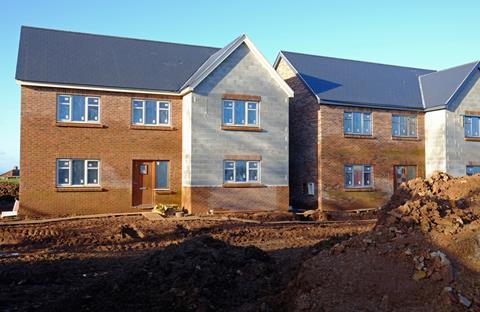Survey led by Campaign for the Protection of Rural England and Place Alliance
An audit of housing design quality will examine at least 100 large-scale developments across England to help drive the construction of better-quality residential schemes.

The audit is being driven by the Campaign for the Protection of Rural England (CPRE) and Place Alliance, which campaigns for better-quality places for people to live and work.
The audit is being conducted by a team from the Barlett School of Planning at UCL. The work has already started and once completed later this year the findings will feed into the government’s Building Better, Building Beautiful commission.
Factors being assessed will include housing types, architectural quality, development character, location, local community facilities and quality of open space.
Three similar audits of new developments in different regions across England were carried out in 2004 and 2007 by the Commission for Architecture and the Built Environment (CABE) before it was disbanded in 2011.
The results of those surveys were mixed, with barely a fifth (18%) of the developments studied labelled “good” or “very good”, while just over half (53%) were deemed “average” and 29% classed as “poor”.
The CPRE and Place Alliance said the aim of the latest audit was to look at how the design of housing schemes over the last decade had changed and provide what the pair called a “baseline against which to measure progress on place-making in new housing development going forward”.
Paul Milner, head of strategic planning at the CPRE, said: “We need to build many more new homes but we should also expect future housing developments to meet high design standards, not just in terms of appearance but also in helping us to move towards a zero-carbon economy.
“We are particularly delighted to see the strong cross-sector support that this important piece of work has received.”
Among the 11 organisations supporting the audit are the Home Builders Federation, the Design Council and Arup.
The design quality of the external residential environment will be measured against 17 topics:
1. Community facilities Does the development provide (or is it close to) community facilities, such as a school, parks, play areas, shops, pubs or cafes?
2. Housing types Is there a mix of housing types to meet varied local needs?
3. Public transport Does the development have easy access to public transport?
4. Environmental impact Does the development have a low environmental impact?
5. The locality Is the design specific to the scheme?
6. Existing and new landscape Does the scheme exploit existing landscape or topography and create a new bio-diverse landscape?
7. Character of the development Does the scheme feel like a place with a distinctive character?
8. Street legibility Do the buildings and layout make it easy to find your way around?
9. Street definition Are streets defined by a well-structured building layout?
10. Highway design Does the building layout take priority over the road, so that highways do not dominate?
11. Car parking Is the car parking well integrated and situated, so it supports the street scene?
12. Pedestrian friendly Are the streets pedestrian and cycle friendly?
13. Connectivity within and with the surroundings developments Does the street layout connect up internally and integrate with existing streets, paths and surrounding development?
14. Safety and security Are open spaces, play areas and streets overlooked and do they feel safe?
15. Public, open and play spaces Are public, open and play spaces well designed and do they have suitable management arrangements in place?
16. Architectural quality Do the buildings exhibit architectural quality?
17. Storage and bins Are storage spaces well designed and do they integrate well within the development?
Source: CPRE/Place Alliance











No comments yet